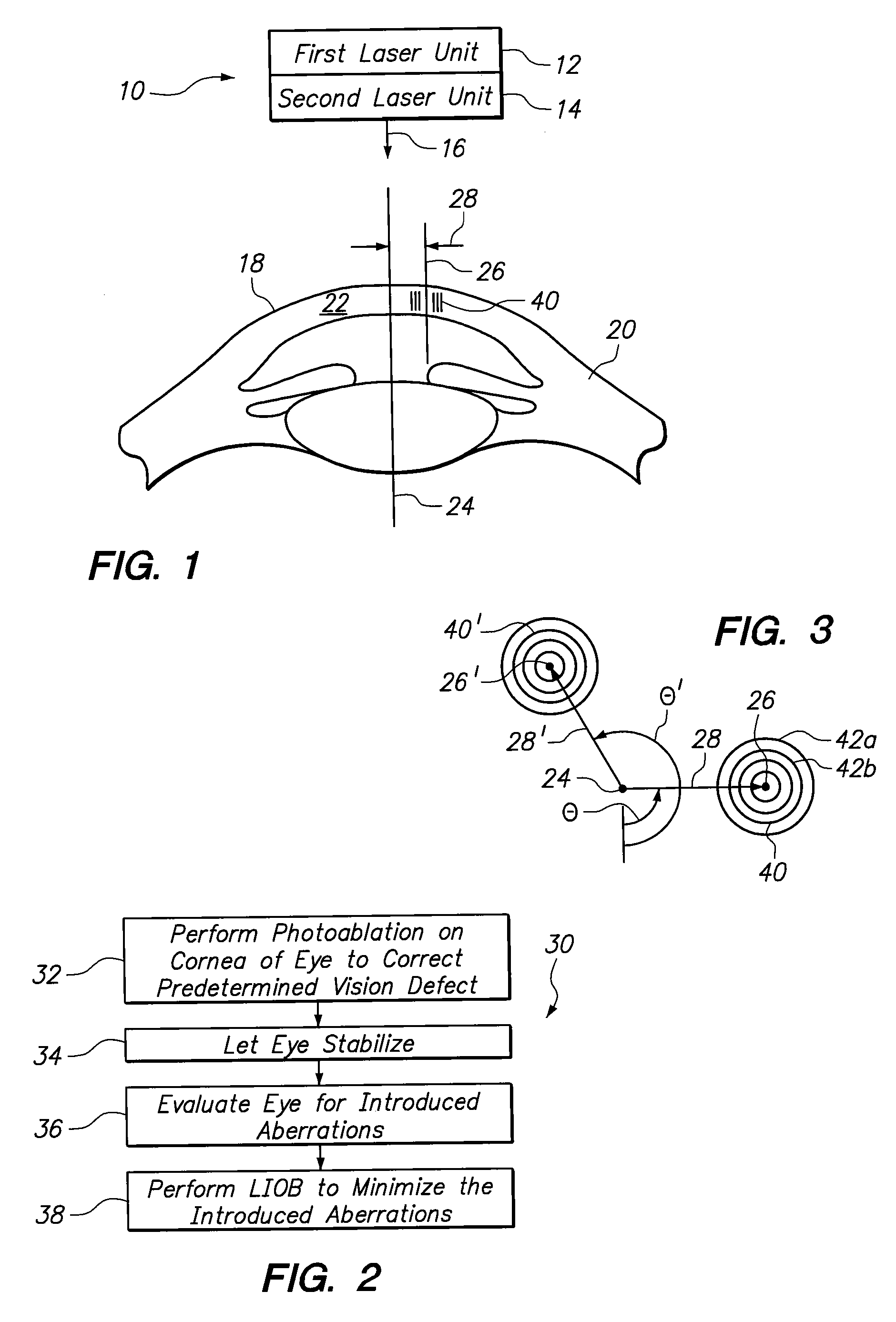System and Methods for Minimizing Higher Order Aberrations Introduced During Refractive Surgery
a technology of aberration and higher order, applied in the field of ophthalmic surgery, can solve the problems of not fully manifesting, undesirable, or impossible to remove (photoablate) additional tissue to correct any aberration, and achieve the effect of minimizing optical aberration and minimizing aberration
- Summary
- Abstract
- Description
- Claims
- Application Information
AI Technical Summary
Benefits of technology
Problems solved by technology
Method used
Image
Examples
Embodiment Construction
[0014]Referring initially to FIG. 1, a system in accordance with the present invention is shown and is generally designated 10. As shown, the system 10 includes a first laser unit 12 and a second laser unit 14. Further, FIG. 1 shows that the first laser unit 12 and the second laser unit 14 are both positioned to direct their respective laser beams along a substantially same laser beam path 16 toward the cornea 18 of an eye 20. Preferably, the first laser unit 12 includes an “excimer” type laser that is capable of photoablating tissue of the cornea 18. For example, it is envisioned for the present invention that the first laser unit 12 is capable of performing typical ophthalmic laser surgery, such the well-known PRK and LASIK procedures. Further, the second laser unit 14 is preferably a pulsed femtosecond type laser that is capable of reshaping the cornea 18 by weakening tissue in the stroma 22 of eye 20 through the process of Laser Induced Optical Breakdown (LIOB).
[0015]Still refer...
PUM
 Login to View More
Login to View More Abstract
Description
Claims
Application Information
 Login to View More
Login to View More - R&D
- Intellectual Property
- Life Sciences
- Materials
- Tech Scout
- Unparalleled Data Quality
- Higher Quality Content
- 60% Fewer Hallucinations
Browse by: Latest US Patents, China's latest patents, Technical Efficacy Thesaurus, Application Domain, Technology Topic, Popular Technical Reports.
© 2025 PatSnap. All rights reserved.Legal|Privacy policy|Modern Slavery Act Transparency Statement|Sitemap|About US| Contact US: help@patsnap.com


